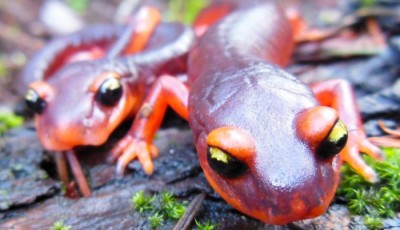Scientists urge Ban on Importing Salamanders as Pets due to Fungus Scare
Scientists revealed that a newly discovered fungus coming from Asia, can annihilate an large amount of salamander species around the world, representing an important risk for North American biodiversity.
It seems that the salamander population in Europe has been decimated by a fungus, Batrachochytrium salamandrivorans, which could affect the salamander population in the US as well. It is home to 48% of 676 recognized salamander species, which are members of nine of the 10 known families in the order Caudata.
Researchers at the University of California – Berkeley (UCB) and San Francisco State University (SFSU) published their study in the journal Science. From 2010 through 2014, all U.S. ports combined received more than 768,000 live salamanders either native to Asia or shipped through an Asian port. The most, about 419,000, arrived in Los Angeles, followed by 272,000 in Tampa, Fla. Alarmingly, 91 percent of pet salamanders imported to North America come from either the Cynops or Paramesotriton groups.
Although a ban is supported by key scientists and the Center for Biological Diversity initiated an online petition in May to institute a ban, the federal government has been slow to act.
“This is an imminent threat, and a place where policy could have a very positive effect”, Vredenburg said.
“Bsal is an acute infection that just turns [salamanders] into little masses of slime in three to four days”, he explains. Both types of fungus develop on the salamanders’ skin and prevent them from breathing and hydrating normally, as these small amphibians need to use their skin for these roles. “We actually have a decent chance of preventing a major catastrophe”, Vredenburg said in a university news release.
“Because we have caught it early, the US has the opportunity to make a difference and lead the way in implementing conservation action and developing effective responses to wildlife emerging infectious diseases”. They are: the southern end of the Appalachian Mountains, the Pacific Northwest and the Sierra Nevada, and the highlands of Central Mexico.
The eastern spotted newt (Notophthalmus viridescens) has the most expansive range in eastern North America and can be found in 34 U.S. states and five Canadian provinces. For more than a decade he has studied the impact of a similarly deadly fungus called Batrachochytrium dendrobatidis (Bd).
The worldwide pet trade is extremely risky because it enables animals to travel all along the world along with their local bugs and parasites and essentially spread them to their foreign relatives, who might or might not be equipped to battle these microscopic predators. This specie is an essential part of forest ecosystem and food chain.









